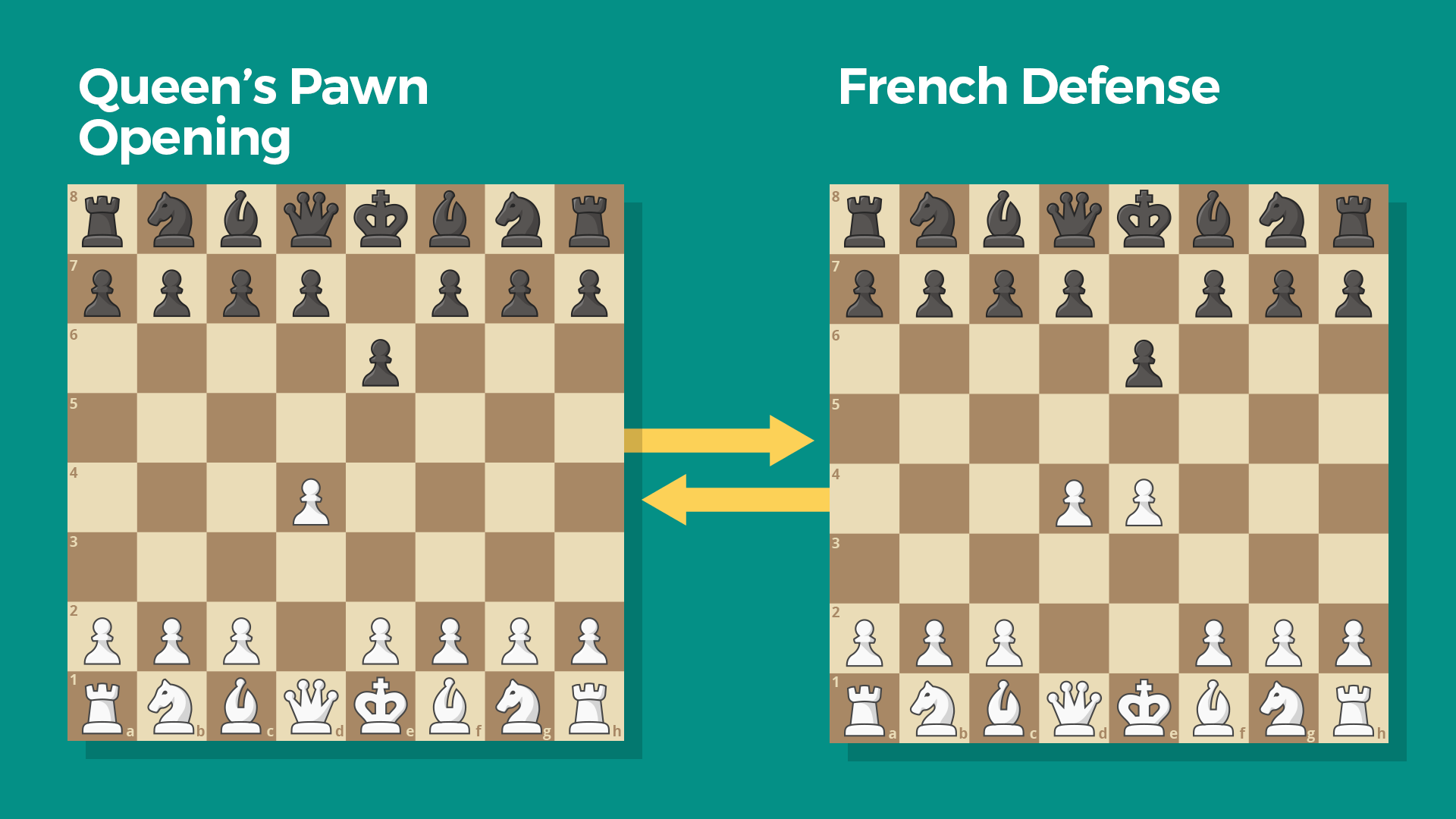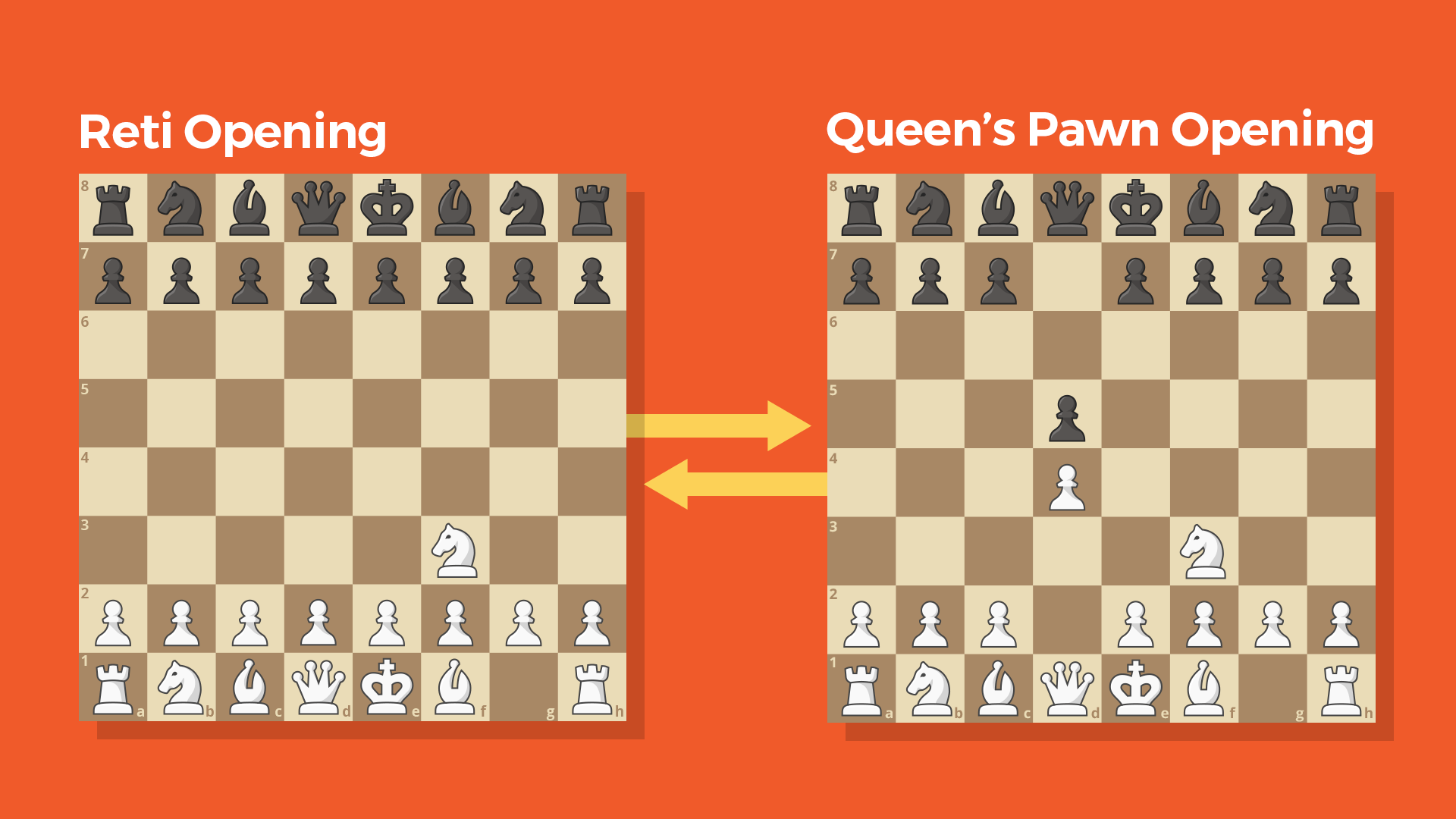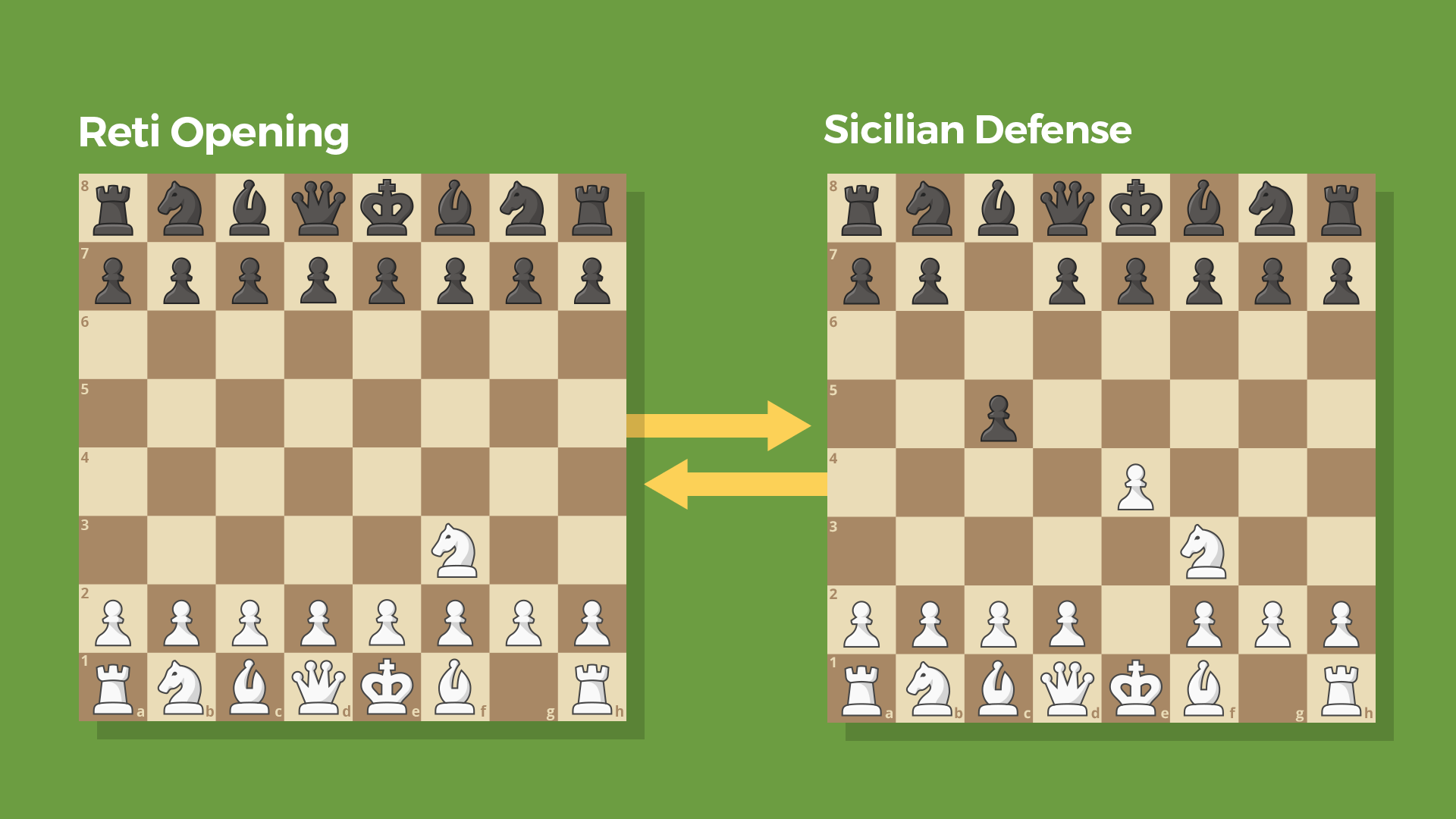
How To Bamboozle Your Opponent With Transpositions!
In chess, an opening transposition occurs when a sequence of moves leads to a position that is more commonly reached by a different move order—same resulting position, different paths to reach the position.
Transpositions can be a powerful tool to have in your opening arsenal to trick your opponent into positions that they may not know very well. When you can successfully hoodwink your opponent into territory that is unknown to them (but where you are aware of the opening ideas), then you have set yourself up for success! It is also good to be aware of the transpositional traps that your opponent is trying to set. Let's look at some of the most common transpositional traps to bamboozle your opponent!
These transpositions come from a list of the most popular transpositions occurring in Chess.com live games.
- Queen's Pawn Opening —> French Defense
- Reti Opening —> Queen's Pawn Opening
- Scandinavian Defense —> Blackmar-Diemer Gambit
- Queen's Pawn Opening —> Pirc Defense
- Reti Opening —> Sicilian Defense
- The Sicilian Defense "Chameleon" Variation —> Open or Closed Sicilian
- The Panov-Botvinnik Attack
- Conclusion
Queen's Pawn Opening --> French Defense (Popularity: 100)

This is the most popular transposition on Chess.com. We will give this a popularity score of 100, and base the other transpositions on the % of the time they occur in comparison to this one.
When White starts out with 1.d4, usually they expect to see one of the classical d4-defenses. These defenses typically start with 1...Nf6 or 1...d5. As Black, starting with 1...e6 on the first move hides our intentions! Could we be looking to play f7-f5 and head to a Dutch Defense? Perhaps we want to play Nf6 and d5, reaching a Queen's Gambit Declined. We could also be planning to play b6 and a Queen's Indian Defense setup.
A natural reply to this slow-looking move is to play 2.e4, gaining space in the center. If we play 2...d5 now, this takes the game into French Defense territory. This is a great option for French Defense players because the 1.d4 opponent may not be so prepared to enter into an e4-opening.
Reti Opening --> Queen's Pawn Opening (Popularity: 73)

When we start out with 1.Nf3, this could easily transpose into a queen's pawn (d4) or English (c4) system. Sometimes the game will just stay in Reti territory though or head to a King's Indian Attack. Whenever I'm designing a repertoire against 1.d4, I always try to think about how that repertoire can mesh with move-orders against both 1.Nf3 and 1.c4 in particular.
If Black responds to our Reti with 1...d5, we can quickly take the game to a Queen's Pawn Opening by playing 2.d4. At this point, Black may be in trouble if they are not naturally a 1.d4 d5 player. We can also use 1.Nf3 as an English player if we suspect that Black will play anything besides 1...d5.
Scandinavian Defense --> Blackmar-Diemer Gambit (Popularity: 50)

The Scandinavian Defense, popularized by International Master John Bartholomew and #TeamScandi. After 1.e4 d5, there is a tricky transposition that we can play as White to take the game into queen's pawn territory. 2.d4!? This move is aggressive and could possibly throw off an unsuspecting Scandinavian player.
Interestingly though, Black could now throw in a transposition themselves by defending the pawn on d5 with a pawn. 2...c6 will transpose to the Caro-Kann Defense and 2...e6 transposes to the French Defense. I'll stop there before we go too deep down this particular transpositional rabbit hole! Try this system out against the Scandinavian and see how well you do.
Queen's Pawn Opening --> Pirc Defense (Popularity: 36)

This transposition is very similar to the first one we looked at. After 1.d4 we aren't quite showing our hand when we play 1...d6. We should be thinking about how we will develop their dark-squared bishop across different first moves for White (1.d4, 1.e4, others). Most likely through g6, which would lead the game into a King's Indian Defense or similar. If we specialize in the Pirc Defense, this move order can bamboozle our opponents.
Our opponent will be tempted here to take the extra center space with 2.d4, not realizing they have stumbled into a Pirc Defense. If White wants to avoid the Pirc, they can try 2.c4 or 2.Nf3 to keep the game in queen's pawn territory. In these cases, we could go for our regular defense against 1.d4 or look for other tricky move-orders. 2...e5 against 2.c4 and 2...Bg4 against 2.Nf3 are both interesting options.
Reti Opening --> Sicilian Defense (Popularity: 6)

The Reti Opening, 1.Nf3, makes the list for a second time. This is one of the trickiest first moves in chess, and that's probably the main reason it's the best scoring common opening in the Chess.com opening explorer. White is winning 39%, drawing 35%, and only losing 26% of the time after starting 1.Nf3. A common reply is to play 1...c5, taking some control of the d4-square with a wing pawn.
If Black is not a Sicilian Defense player though, they could quickly be in unknown territory after we play 2.e4. To help avoid transpositional traps from the black side of the Reti Opening, here are a few pointers. How should we avoid the Reti positional traps from the black side though?
If your main defense against 1.d4 is 1...d5, then you are safe to play d5 against Nf3. If your main defense against 1.d4 is 1...Nf6, that's probably your best bet against 1.Nf3. If you love the Sicilian Defense and the Symmetrical English from the black side, 1...c5 is probably the choice for you.
The Sicilian Defense: Chameleon Variation

The Sicilian Chameleon Variation has earned its name for a good reason. Just as chameleons have an ability to change based on their surroundings, we can decide to play either the Open Sicilian or Closed Sicilian after 2.Ne2. This was my primary weapon for many years, and it was a good way to throw off my opponents. Many Sicilian players will play an early ...g6 once they see the setup with 2.Nge2 and 3.Nc3, thinking that they are about to play a closed Sicilian. If they are not Sicilian Dragon players though, we can definitely catch them in an uncomfortable spot by playing 4.d4, opening up the game.
The Panov-Botvinnik Attack

If you are a fan of the Panov-Botvinnik Attack, also known as the Panov Attack, there are multiple move orders you can use to trick your opponent into this pawn structure. The most common path is through the Caro-Kann, after 1.e4 c6 2.d4 d5 3.exd5 cxd5 4.c4. Lets say you are playing an opponent who plays the French Defense against 1.e4 and the Slav Defense against 1.c4 and 1.d4. You could start with 1.c4 c6 2.e4! d5 3.exd5 cxd5 4.c4 and reach the same setup—many French Defense players and Slav Defense players will be unprepared for this type of position!
Conclusion
There are many transpositional traps to watch out for in the opening. Learning to set these traps and be prepared for your opponents' traps will take your openings to the next level. What are your favorite transpositional traps to set? Let us know in the comments below!




